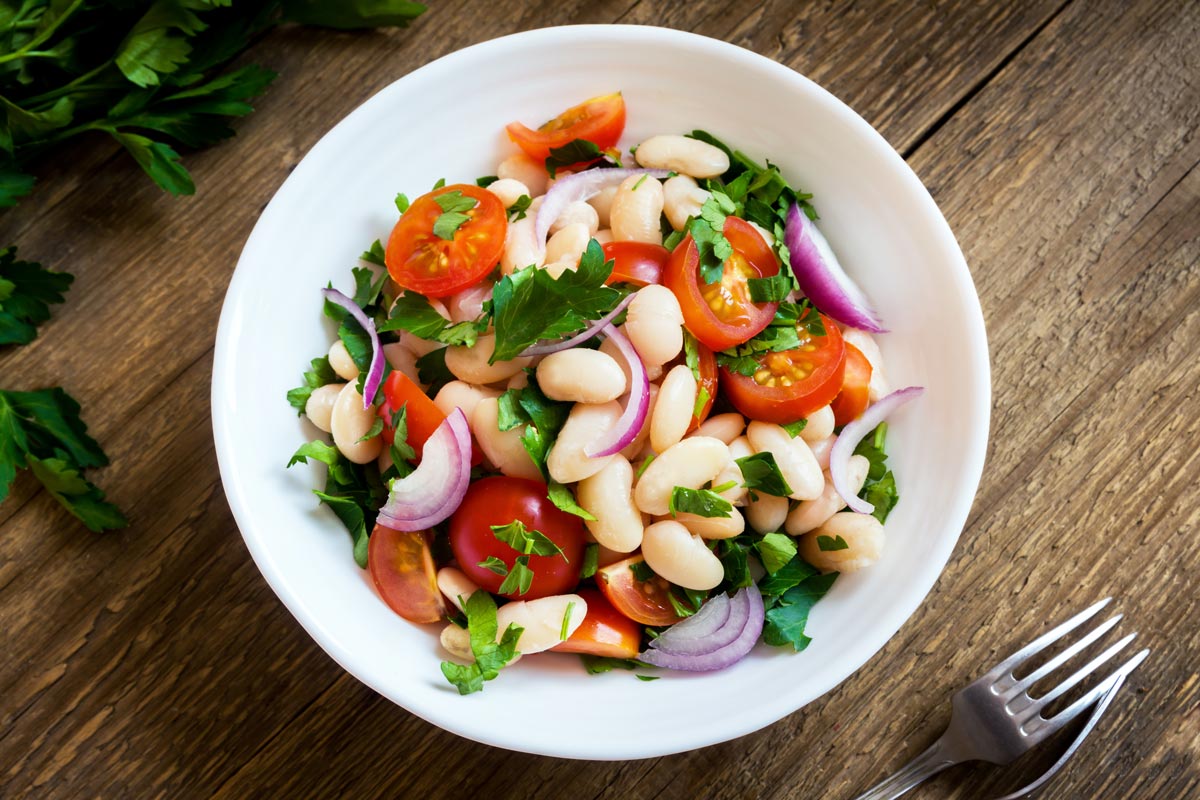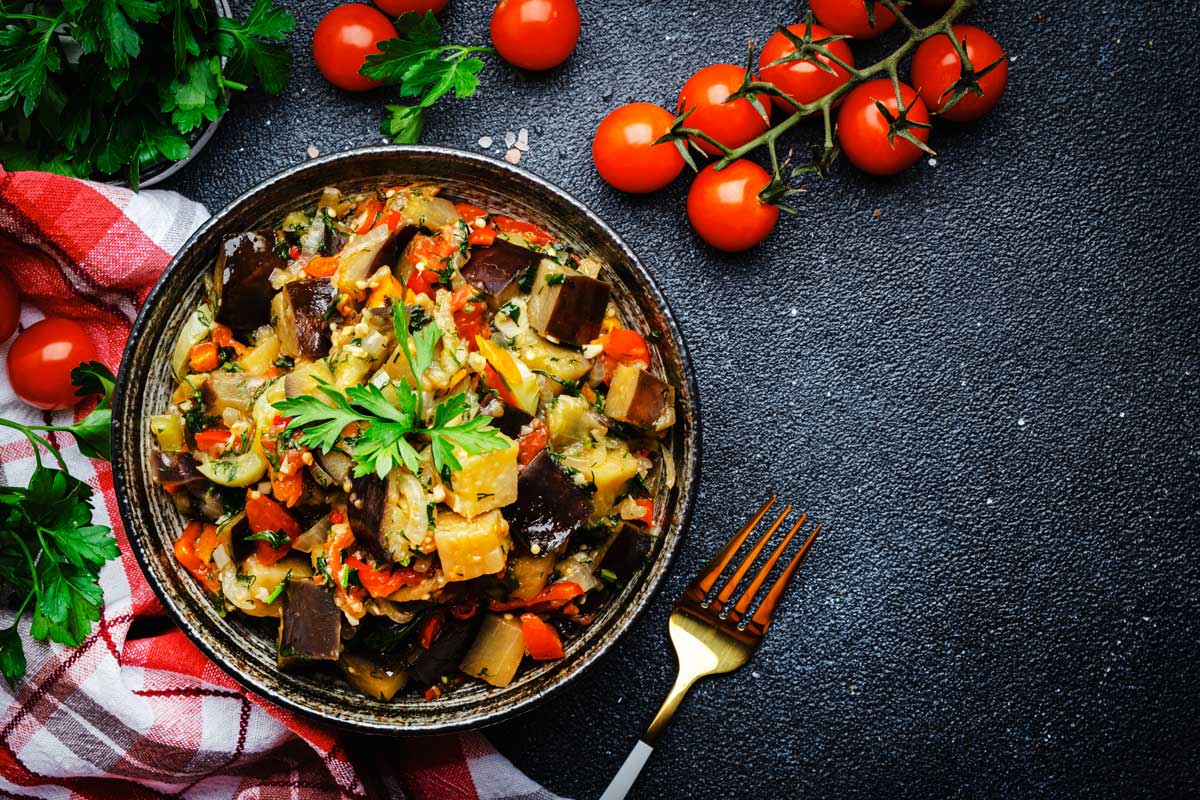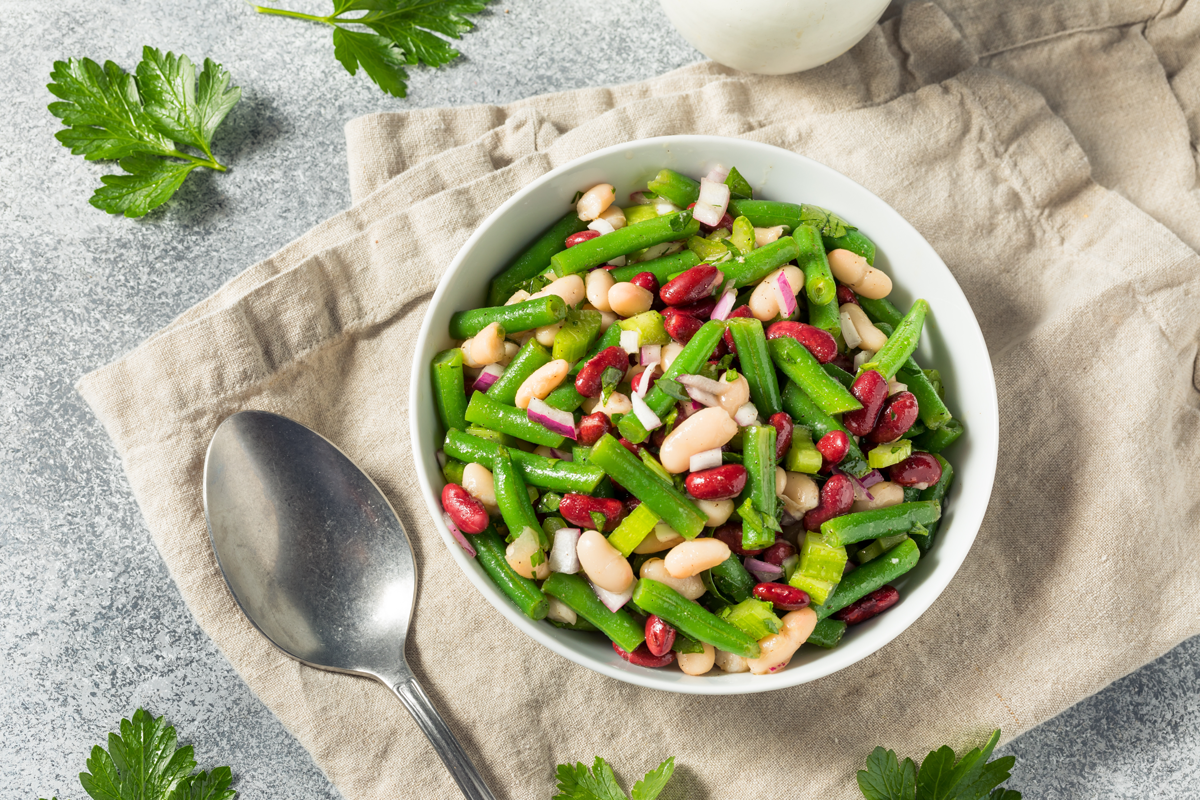Every country around the Mediterranean has its own version of a national salad, usually created with tomatoes, cucumber, and onions with a smattering of fresh herbs. My version brings in the sweet surprise of watermelon—on its own a great pairing with the feta. Speaking of feta, always buy blocks or rounds of feta, not crumbles, which often get dried out in the package. This combination makes a satisfying lunch or dinner, especially on hot days when you want to enjoy a light meal with no cooking needed. It takes only a few minutes to prep, but if you have the time, let it sit on the counter for about 30 minutes before digging in so that the flavors can meld.
Ingredients
- 2 large cucumbers
- 1 pound tomatoes, any variety
- 1 pound watermelon chunks
- 1 medium red onion
- 1/2 cup fresh parsley, minced
- 1/4 cup fresh mint, minced
- 4 tablespoons extra virgin olive oil
- 2 tablespoons fresh lemon juice, plus more to taste
- Freshly ground black pepper and sea salt to taste
- 6-ounce slice feta cheese
Directions
Step 1
Cut the cucumbers (leave the skins on), tomatoes, watermelon, and red onion into an even dice and place in a large glass bowl. Add the herbs, olive oil, and lemon juice, and toss gently. Taste and, if needed, add salt, pepper, and extra lemon juice to your liking.
Step 2
Just before serving, crumble the feta over the top.
Yields 4 servings




